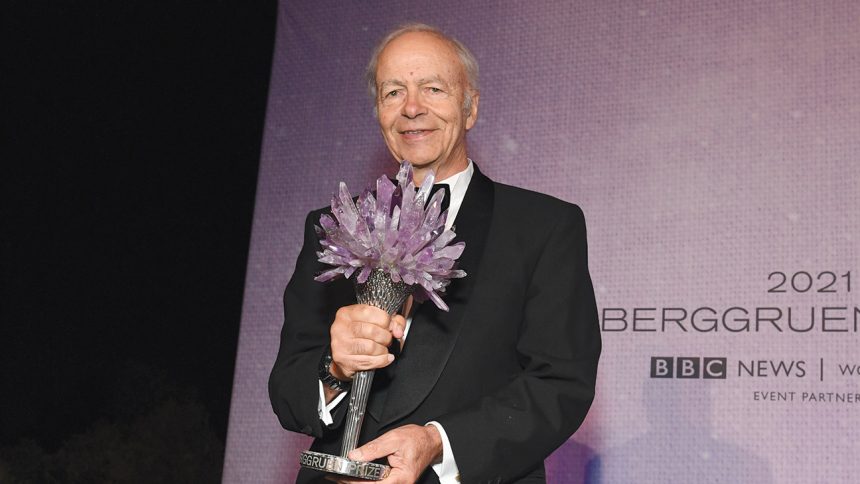Giving on the Edge: Effective Altruism’s Post-SBF Comeback
The news was as bad as it gets for a philanthropic movement: Its biggest donor and most prominent spokesperson had been convicted of seven counts of fraud, conspiracy and money laundering and was heading to jail for 25 years.
Sam Bankman-Fried, the founder and CEO of crypto exchange FTX, had long been both a major advocate for and donor to the ascendant philanthropic approach known as Effective Altruism, or EA. Now his demise would bring it all down.
“People had huge hopes, and that all crashed,” recalls the moral philosopher and longtime Princeton professor Peter Singer, who is considered EA’s intellectual architect, of that fall 2022 arrest. “It was both exceedingly disappointing in terms of the lost billions and the reputation of the movement.”
But Singer says EA has roared back with new relevance under a USAID-dismantling Trump presidency.
“The movement is regrouping,” he says. “And various things have happened to make it more important than ever.”
Dismissed by some as an intellectual fad, EA, according to its founders, marked a serious and fundamental rethink of philanthropy, away from an exercise in black-tie self-congratulation and toward a rigorous quantitative science. But its critics say EA continues to make narrow and curious choices that neglect both systemic issues and the complexly human reasons people give, as a battle for billions rages on.
Coalescing as a movement under Singer and others in the late 2000s (and given pop-cultural countenance by the enduring popularity of Michael Lewis’ influential 2003 best-seller Moneyball), EA seeks to use statistical analysis to do the greatest good for the greatest number — utilitarianism mapped onto charitable donations. Out were allegedly feel-good but far from life-or-death causes like museum restorations; in were bang-for-buck targets like vaccine distribution and malaria nets in the Global South, where even a few dollars could tangibly save lives.
The movement spread thanks to the philanthropic organization Good Ventures, which doles out money to a plethora of EA causes under the leadership of Facebook co-founder Dustin Moskovitz and his wife, Cari Tuna; groups like GiveWell and the Moskovitz-funded Open Philanthropy, which respectively recommend charities and donate to them on a metrics-based scale; and entities like 80,000 Hours and The School for Moral Ambition, which look to foster the most impactful careers, altruistically speaking. (Open Philanthropy’s goal, based on a system of equations, is bold: Ensure that every $50 it donates leads to a person’s added year of healthy life.)
EA had been granted a major boost just a few months before the SBF downfall with the publication of William MacAskill’s What We Owe the Future, the Oxford-based Scottish philosopher sketching out “longtermism,” a worldview that contextualizes efforts in terms of billions of humans not yet born.
The book’s ideas Venn-diagrammed with EA’s data-based approach to social issues — a concept that proved especially resonant in Silicon Valley. When MacAskill published his book in the spring of 2022, Elon Musk famously tweeted, “Worth reading. This is a close match for my philosophy.” (MacAskill and fellow Oxfordite Toby Ord founded the Centre for Effective Altruism, part of an overlapping network of organizations associated with EA.)
But then came the drop in EA giving after the FTX collapse. Due to a reduction in Open Philanthropy contributions in 2023, GiveWell directed only $216 million in funds that year, a 51 percent plunge from $439 million in 2022.
In the time since, though, Singer says the movement has seen increases, citing a 2024 uptick in giving at his own EA org, The Life You Can Save. Singer says that a rapid-response fund started by that group and the entrepreneur-based Founders Pledge in the wake of the USAID cuts have in just the past few months generated some $50 million in new donations. Neither Ord nor GiveWell CEO and co-founder Elie Hassenfeld replied to a message seeking comment.
Maybe even more than the money swings, the FTX turbulence generated debate. One telling example has unfolded in the pages of The New York Times’ annual holiday Giving Guide. Just a few weeks after the FTX fiasco, Ezra Klein argued in a piece headlined “The Big Thing Effective Altruism (Still) Gets Right” that the movement’s basic approach of metricized compassion remains correct. Even as Klein offered some constructive criticisms, he noted that GiveWell and the movement it represents “does an excellent job” and that “giving to organizations I’m so certain of is a good feeling.”
But this past Christmas in those same pages, business journalist Emma Goldberg argued the opposite, asking if “some charity should be reserved for causes outside optimization — extending the deepest sources of meaning in our own lives toward others and strengthening the communities we are part of.”
Subscribing to EA, she said, meant denying human motivations for giving and even providing a fig leaf for unchecked capitalism. “It’s an approach that can give people moral permission to keep amassing more wealth — as long as they give some of it away,” she wrote.
Other critics say EA remains a constrictive philosophy with weird or even harmful outcomes.
“It can sound really good from a distance,” says Émile Torres, a Bay Area-based philosopher who has been a vociferous critic. “The problem is, you can get the numbers to fit any desired conclusion. It looks rigorous, but it’s not at all.”
Torres also says the movement suffers from an unwillingness to address root causes, citing an Eastern Ugandan case in which EA-directed money to poor people was criticized by a local leader as simply perpetuating the poverty cycle. The building of a grain facility would have had more lasting impact, the leader said, than a simple wealth transfer that would not ensure future livelihoods.
And Torres says the shift in the past 18 months away from current global poverty and animal-welfare concerns to AI safety — which, given the assumption of an ever-improving tech, might affect billions of people deep into the future — represents a further dilution, a conquering of the concrete goals of saving lives by the more speculative ideas of longtermism. “I’m very frustrated in thinking about this hypothetical future of a trillion digital people, and meanwhile living and breathing beings are being neglected,” Torres says.
In Silicon Valley, the EA movement has become aligned with Eliezer Yudkowsky’s “doomer” movement that worries about AI acceleration — thus making EA a bulwark against the “e/acc” accelerationists like OpenAI’s Sam Altman who want to floor the pedal on AI to further techno-optimist goals like immortality and the human-machine meld known as the Singularity. Indeed, Altman’s retaking of power after a brief firing during Thanksgiving weekend 2023 was seen as a major victory for the accelerationists against the Effective Altruists.
Singer says he wishes the focus would stay slightly more on tangible goals than AI safety — “I personally would rather people focus on things like climate change” — but believes doomerism isn’t as big a part of the EA pie as some might say. “It’s not the whole of the movement. I don’t even think it’s the majority of the movement,” he notes. “The way things are happening in the world, now people are turning back to the relevantly present.”
As for systemic causes like colonialism, he says that “if anybody can produce metrics showing how you’re going to overthrow the global capitalist order and what you’re going to put in its place, EA people would look at that.” But as numerous previous revolutions have shown, “it’s a very resilient system. I would rather try to reform it than overthrow it.”
What can be vexing to those outside the debate is that both sides claim the altruist mantle. A good-faith battle has never seemed so acrimonious, and every argument feels persuasive until its rebuttal comes along. In the end, how we evaluate EA’s legitimacy may say more about us than it does the movement.
Do we see poverty and indeed the world as a set of equations there to be solved — does the math not lie? Or should we be apprehending the world as much by feeling as by formulae? There is, fittingly, no shortage of data points.
This story appeared in a standalone issue of The Hollywood Reporter magazine. Click here to subscribe.







